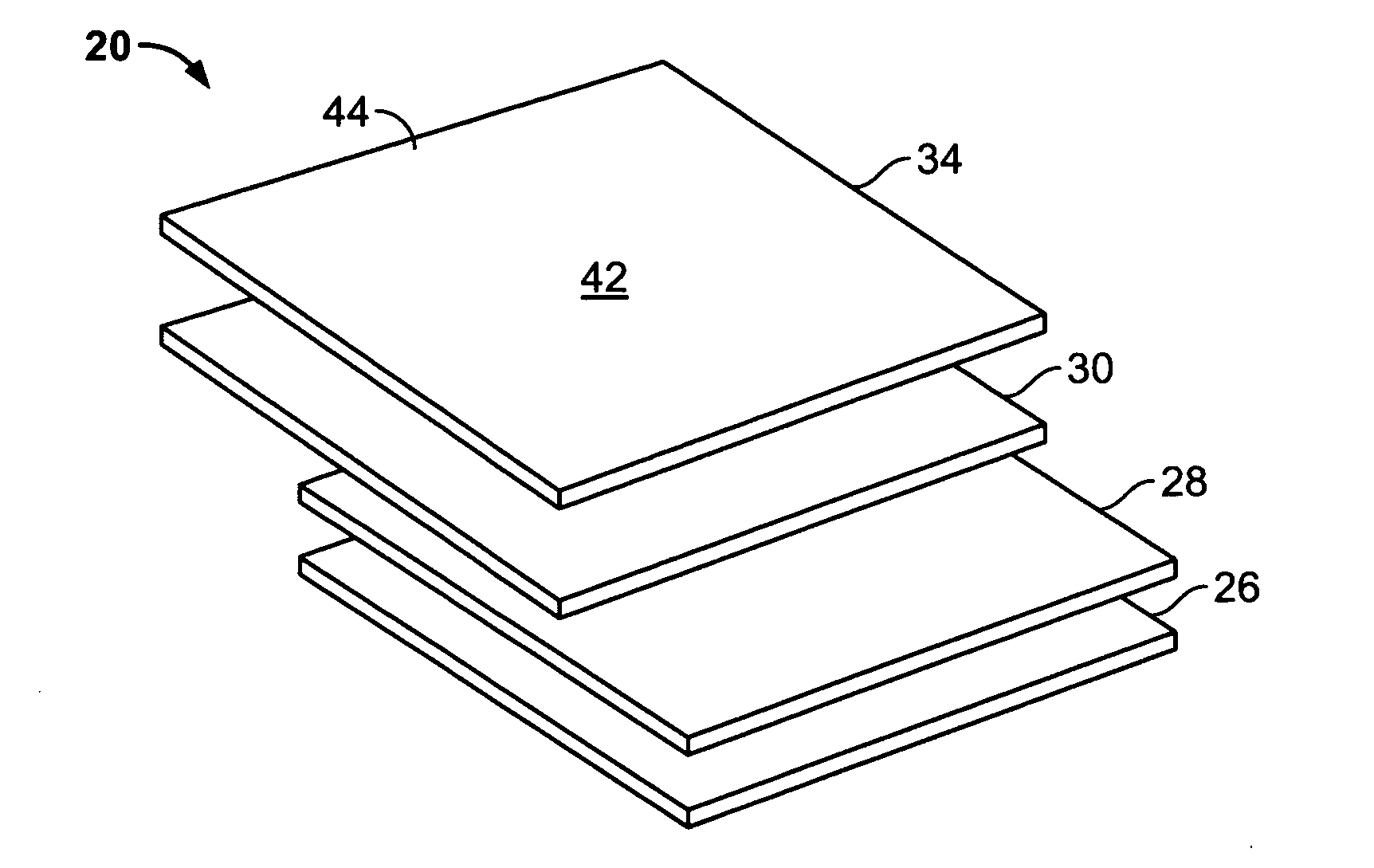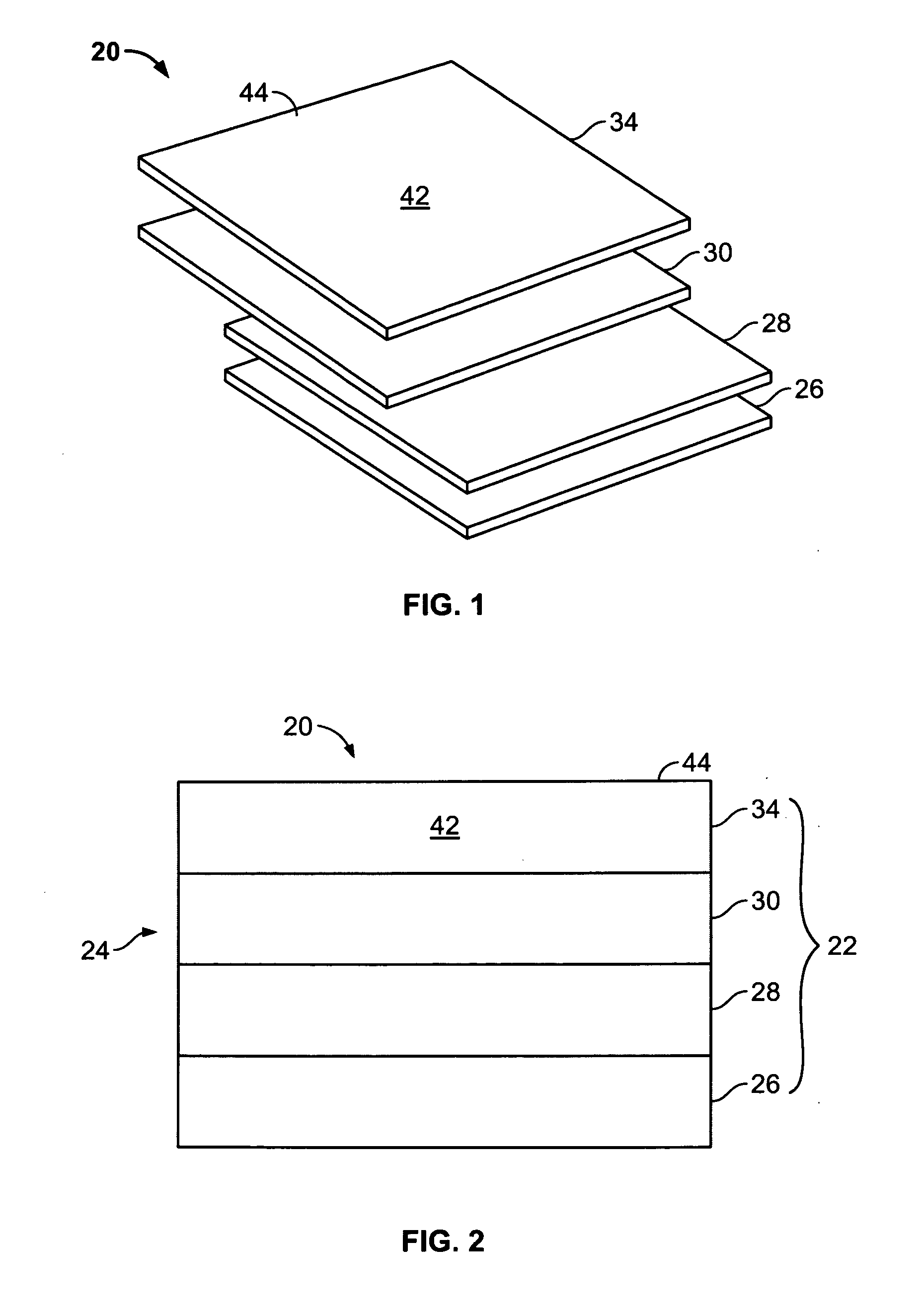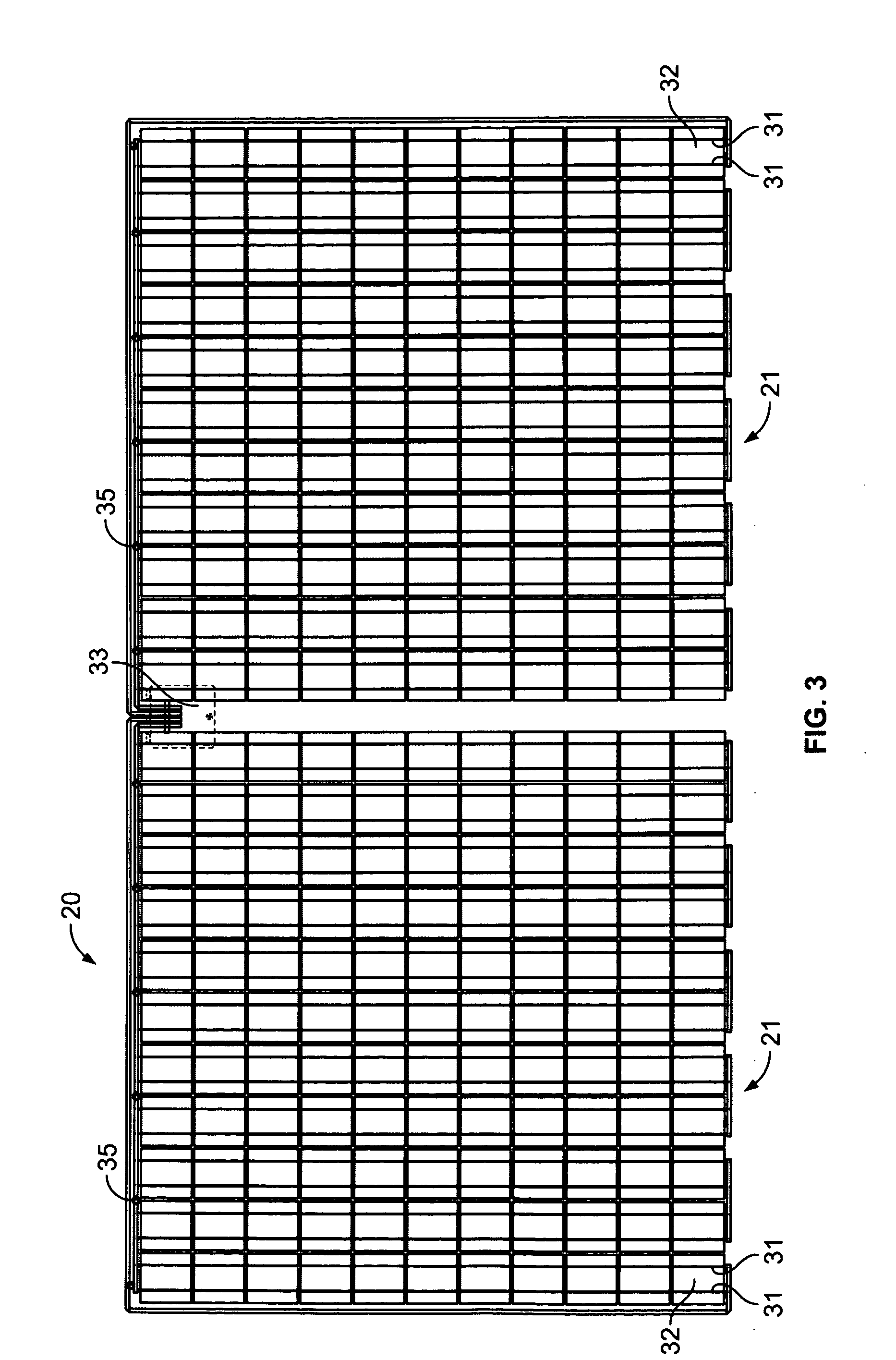Photovoltaic system and method of making same
a photovoltaic system and photovoltaic technology, applied in the field of photovoltaic systems and methods of making same, can solve the problems of large solar energy collection areas, difficult mounting of photovoltaic devices to roof structures, and low efficiency of photovoltaic cells
- Summary
- Abstract
- Description
- Claims
- Application Information
AI Technical Summary
Benefits of technology
Problems solved by technology
Method used
Image
Examples
Embodiment Construction
[0024] The description which follows, and the embodiments described therein are provided by way of illustration of an example, or examples of particular embodiments of principles and aspects of the present invention. These examples are provided for the purposes of explanation and not of limitation, of those principles of the invention. More specifically, in the description that follows an exemplary application of a photovoltaic system in the field of roofing is described. It will however be appreciated that the present invention is not limited to photovoltaic systems for use in roofing applications. It is contemplated that the photovoltaic system described herein below may be advantageously employed in a broad range of applications and may be installed onto any surface exposed to sufficient amounts of sunlight.
[0025] Referring to FIGS. 1, 2 and 3, there is shown a photovoltaic system designated generally with reference numeral 20. The photovoltaic system 20 is adapted for mounting ...
PUM
| Property | Measurement | Unit |
|---|---|---|
| Length | aaaaa | aaaaa |
| Length | aaaaa | aaaaa |
| Thickness | aaaaa | aaaaa |
Abstract
Description
Claims
Application Information
 Login to View More
Login to View More - R&D
- Intellectual Property
- Life Sciences
- Materials
- Tech Scout
- Unparalleled Data Quality
- Higher Quality Content
- 60% Fewer Hallucinations
Browse by: Latest US Patents, China's latest patents, Technical Efficacy Thesaurus, Application Domain, Technology Topic, Popular Technical Reports.
© 2025 PatSnap. All rights reserved.Legal|Privacy policy|Modern Slavery Act Transparency Statement|Sitemap|About US| Contact US: help@patsnap.com



